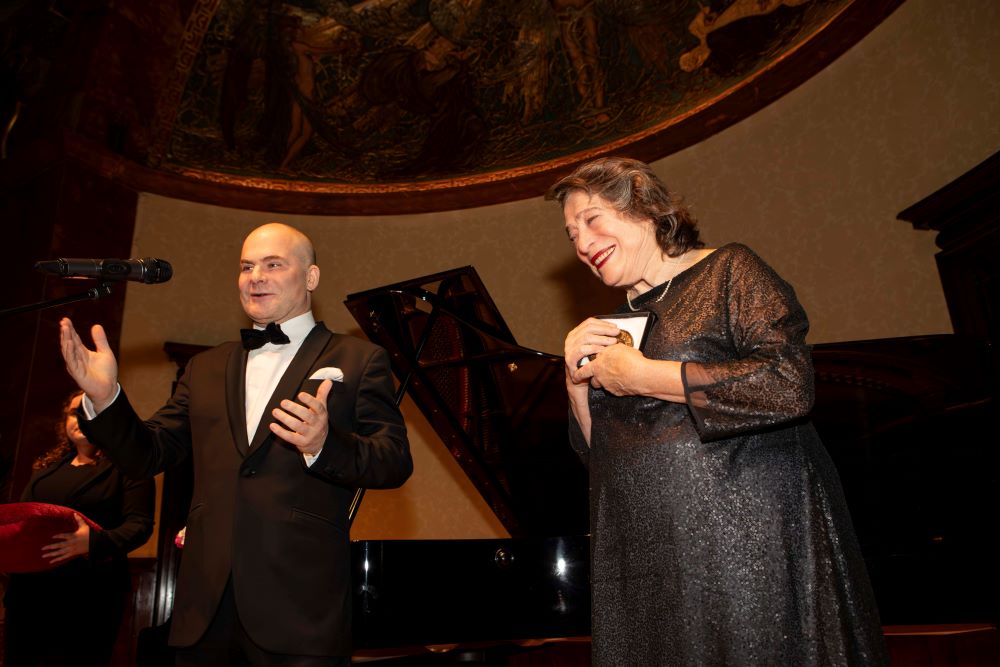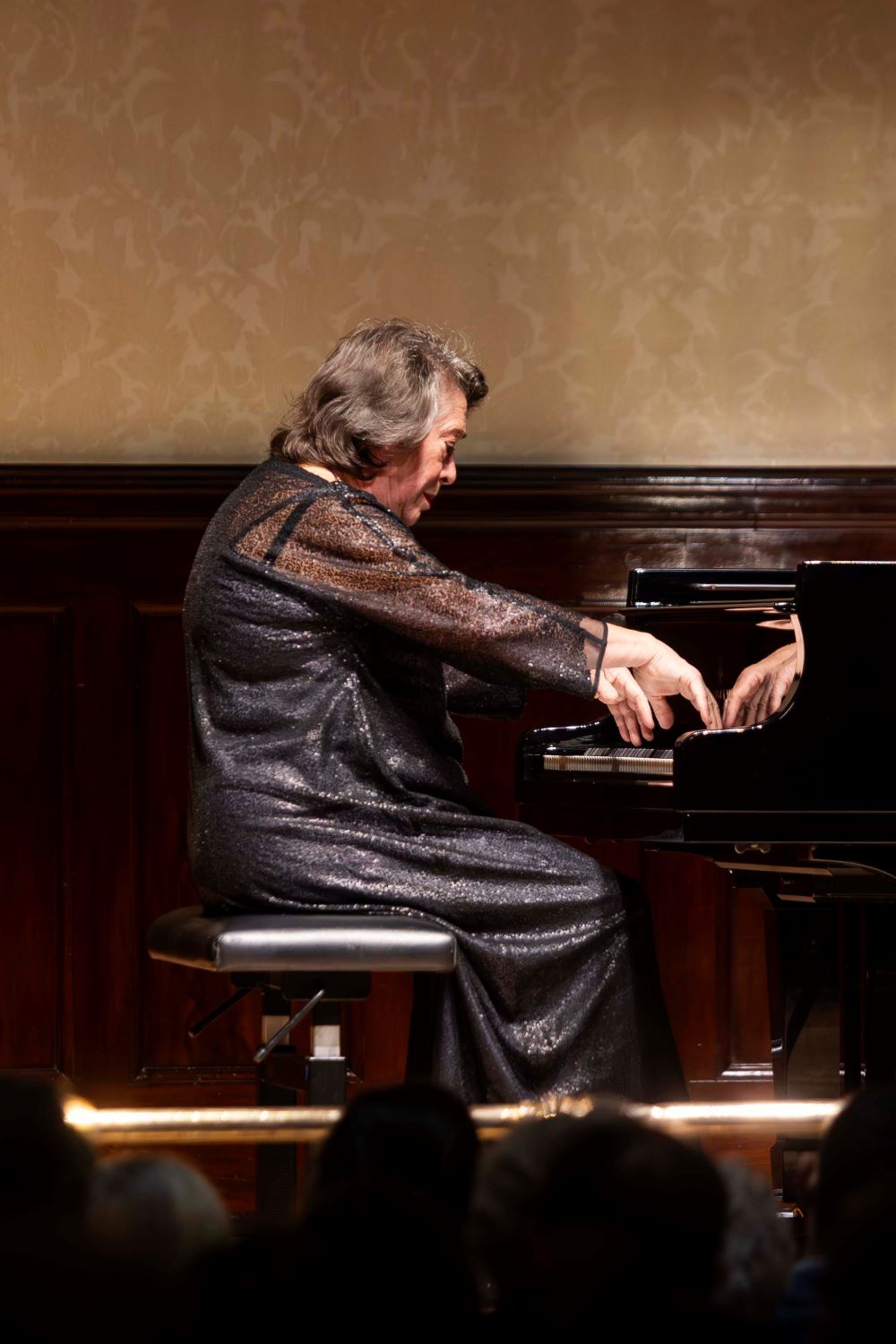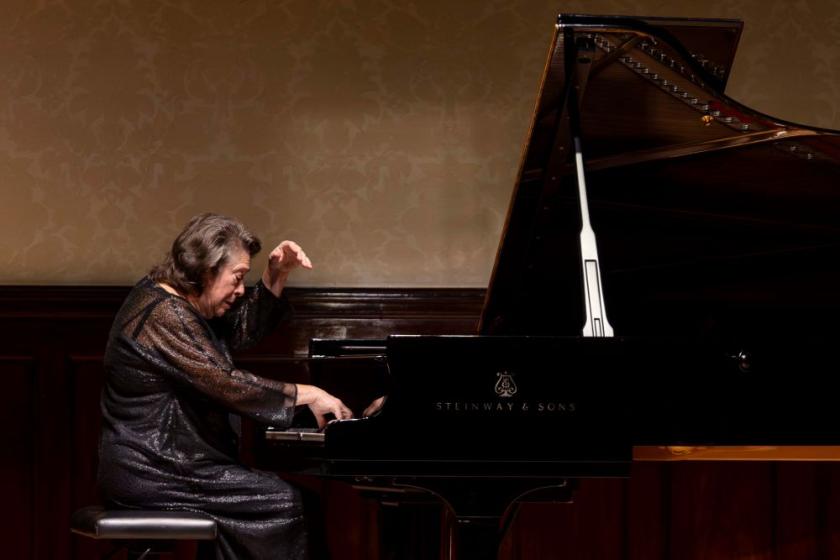Wonders never ceased in Elisabeth Leonskaja’s return to the Wigmore Hall. Not only did she play Schubert’s last three sonatas with all repeats and the full range of a unique power undiminished in a 78-year old alongside a never too overstated pathos, radiance and delicacy; just before receiving the Wigmore Hall Medal (presentation by John Gilhooly pictured below), she also gave us more revelations in the compressed world of Schoenberg’s Six Little Pieces, Op. 19.
Only this pianist could possibly follow Pavel Kolesnikov's revelatory take on Schubert's crowning glory, the B flat Sonata D960 the previous Sunday. Leonskaja, his friend and mentor, has of course lived with this music for infinitely longer, and her interpretations never stand still. Did I imagine an extra ferocity in the disruptions of the first movement's shining path? The loudest reiteration of that seismic rumble in the bass, opening up the threatened abyss, is so crucial to observing the exposition repeat; it's hard to fathom why the Brendel school ignore it. Besides, Leonskaja's gently gliding calm has to be redoubled.  In the A major Sonata, D959, she seemed to have all the time in the world for the gentle second theme, and hearing it three times made total sense of the extraordinary serenity with which that opening movement is laid to rest.
In the A major Sonata, D959, she seemed to have all the time in the world for the gentle second theme, and hearing it three times made total sense of the extraordinary serenity with which that opening movement is laid to rest.
The incandescent A major of the predominantly calm finale rose to extraordinary heights of resonance; I could feel it in my body. As for the earthquake that rips through the carefully-articulated sadness of the Andantino's lament, could any living pianist conjure more weight and power in it than this? (Incidentally, I'm not sure whether it impinged upon the pianist, but some of us felt the rage at her adoptive country Austria's return to the far right). We had colossal warnings right at the start of the first sonata in the sequence, D958 in C minor, erupting into the ever-restless tarantella of what is in some ways the most challenging finale of the three; Leonskaja paced it to perfection, and made sure that the last word in D960 kept ominousness in sight with its weighty repeated Gs. For all that, there's always the feelingn that the B flat major Sonata could end with the perfect peace with which its Andante sostenuto concludes.
 This is the deepest, saddest slow movement of all - maybe not just in Schubert's output - and only last night's total mastery could do it full, cathartic justice.You could also see as well as hear, if you were lucky enough to sit on the left side of the hall, the way the infinitely soft notes of the left hand crossing above the right were achieved, as they had been in Kolesnikov's performance as well: No. 5 of Leonskaja's golden rules for students is "free thumbs (very important!), free elbows and wrists, and sitting comfortably at your instrument. All this leads to unobstructed energy flow". It never felt like a long evening; time became space.
This is the deepest, saddest slow movement of all - maybe not just in Schubert's output - and only last night's total mastery could do it full, cathartic justice.You could also see as well as hear, if you were lucky enough to sit on the left side of the hall, the way the infinitely soft notes of the left hand crossing above the right were achieved, as they had been in Kolesnikov's performance as well: No. 5 of Leonskaja's golden rules for students is "free thumbs (very important!), free elbows and wrists, and sitting comfortably at your instrument. All this leads to unobstructed energy flow". It never felt like a long evening; time became space.
Only Leonskaja, moreover, could pull something else out of the hat after such an odyssey. That it turned out to be the Schoenberg pieces was another masterstroke. The composer wrote at the time that "this multicoloured, polymorphic, illogical nature of our feelings, and their associations, a rush of blood, reactions in our senses, in our nerves; I must have this in my music". He must have dreamed of such an interpreter to realise it all. My companion, the pianist Sophia Rahman, has been talking in the interval about her performance of this unique Op. 19 the previous week at West Malling, and about how the gentle bells of the last piece were a homage to Mahler, who died in 1911 just before Schoenberg wrote it. The serendipity of Leonskaja's encore rendered this a tombeau to Schubert, too.














Add comment